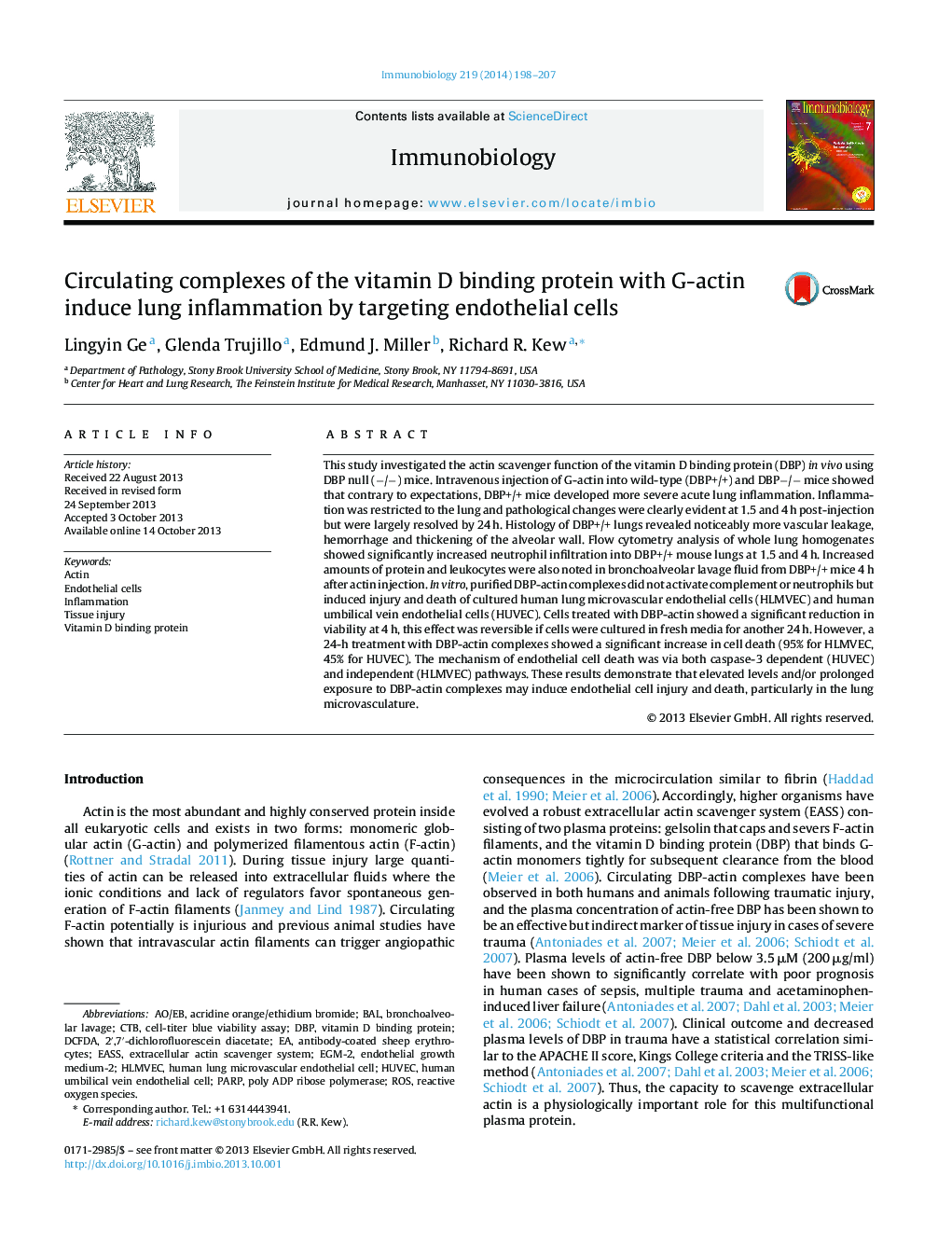| Article ID | Journal | Published Year | Pages | File Type |
|---|---|---|---|---|
| 2183408 | Immunobiology | 2014 | 10 Pages |
This study investigated the actin scavenger function of the vitamin D binding protein (DBP) in vivo using DBP null (−/−) mice. Intravenous injection of G-actin into wild-type (DBP+/+) and DBP−/− mice showed that contrary to expectations, DBP+/+ mice developed more severe acute lung inflammation. Inflammation was restricted to the lung and pathological changes were clearly evident at 1.5 and 4 h post-injection but were largely resolved by 24 h. Histology of DBP+/+ lungs revealed noticeably more vascular leakage, hemorrhage and thickening of the alveolar wall. Flow cytometry analysis of whole lung homogenates showed significantly increased neutrophil infiltration into DBP+/+ mouse lungs at 1.5 and 4 h. Increased amounts of protein and leukocytes were also noted in bronchoalveolar lavage fluid from DBP+/+ mice 4 h after actin injection. In vitro, purified DBP-actin complexes did not activate complement or neutrophils but induced injury and death of cultured human lung microvascular endothelial cells (HLMVEC) and human umbilical vein endothelial cells (HUVEC). Cells treated with DBP-actin showed a significant reduction in viability at 4 h, this effect was reversible if cells were cultured in fresh media for another 24 h. However, a 24-h treatment with DBP-actin complexes showed a significant increase in cell death (95% for HLMVEC, 45% for HUVEC). The mechanism of endothelial cell death was via both caspase-3 dependent (HUVEC) and independent (HLMVEC) pathways. These results demonstrate that elevated levels and/or prolonged exposure to DBP-actin complexes may induce endothelial cell injury and death, particularly in the lung microvasculature.
